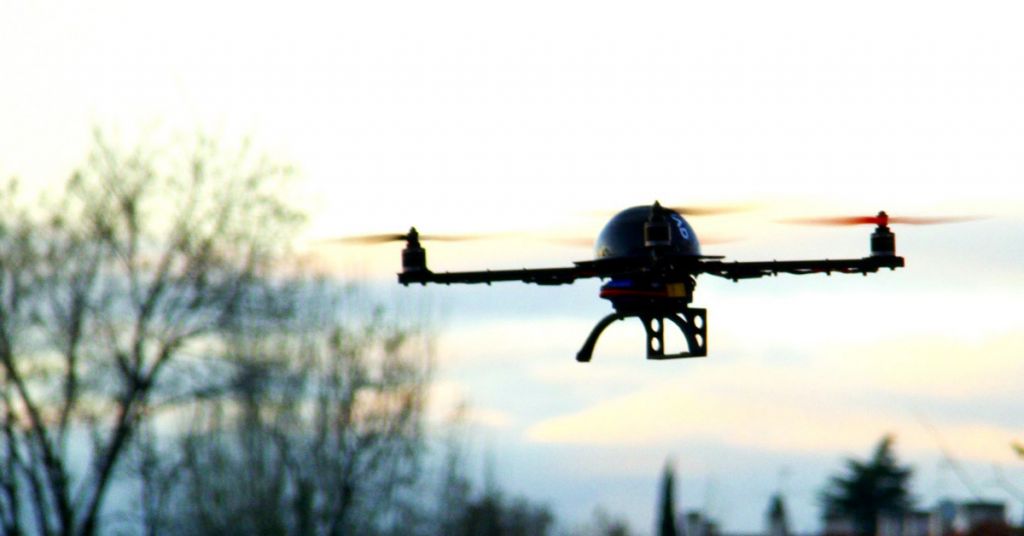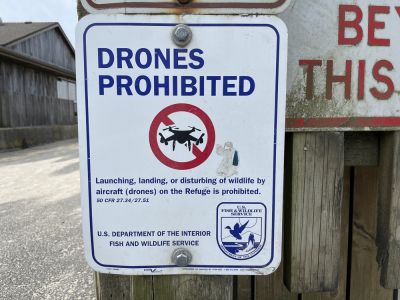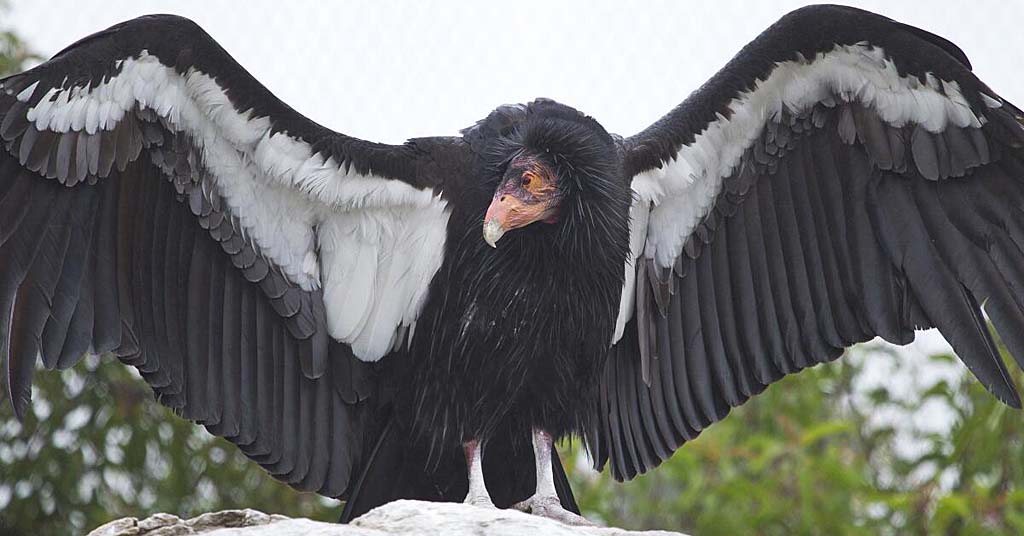Oregon Parks and Recreation is considering input from drone advocates and critics before signing off on a controversial rule change

Up, up or away?: Drone photography produces great pictures. And bothers birds. Photo: David Rodriguez Martin/CC
By Cole Sinanian. June 23, 2022. It may soon be legal to launch and land recreational and commercial drones in Oregon state parks.
After issuing a draft proposal earlier this year, the Oregon Parks and Recreation Department (OPRD) is convening a work group to decide where flying drones should be prohibited, where it should be allowed and where it would require a permit. Parks officials hope to have a draft proposal ready by next spring.
Currently, there are no standardized rules governing drone use in Oregon’s state park system outside of FAA guidelines. Park managers can implement restrictions for specific circumstances on a case-by-case basis. [The original version of this story incorrectly stated that it is currently illegal for drone users to take off and land within all Oregon state parks. —Ed]
OPRD received approval from state legislature to regulate drone use in 2021 through Senate Bill 109, after which it convened a rule advisory committee that began meeting late last year.
The committee—which largely consisted of state parks officials and lacked representation from external wildlife biologists—ultimately settled on a proposal that would allow drones to take off anywhere unless otherwise specified.
The proposal was panned by conservation groups like the Portland Audubon Society and the Oregon Ocean Policy Advisory Council, who criticized its failure to consider sensitive coastal habitats, and generated hundreds of conflicting public comments.
“It was meant to be a transition point from where we are now,” says associate director of Oregon Parks and Recreation Department Chris Havel. “But it’s clear that we need more time to figure out the drone issue. The rules need to be specific enough for everyone to feel comfortable.”
After the backlash, state parks paused the rulemaking process in April, and is in the process of convening another work group with broader representation. By next spring, park officials hope to draft a proposal that uses scientific input to designate specific areas where drones can fly.
Aerial disturbance
Much of Oregon’s coastal habitat is regulated by the state park system, so conservationists are concerned that allowing drones to fly within its limits could disrupt the coast’s 1.3 million nesting seabirds.
Drone interactions with seabirds are well documented.

No-fly zone: Haystack Rock Marine Garden at Cannon Beach, Ore., is a National Wildlife Refuge. Photo: Kelli Ennis
In May 2021, a drone crash in the Bolsa Chica Ecological Reserve in Huntington Beach, Calif., caused an entire flock of elegant terns to abandon their nests, leaving behind as many as 2,000 eggs, the Orange County Register reported.
The birds never returned, meaning an entire season’s worth of the near-threatened tern was lost.
According to Portland Audubon staff scientist Joe Liebezeit, seabirds on the Oregon Coast are highly territorial when nesting, and will chase moving objects they perceive as living.
Drones—typically small, lightweight, multi-propellered craft equipped with high-resolution cameras— appear as predators to birds, prompting them to either fight the aircraft or flee. Repeated disturbances can leave nests vulnerable to predators and the elements, affecting the cohort’s long-term survival, Liebezeit says.
“If the birds are flushed from the nest repeatedly over time, they’re not able to incubate their eggs or take care of their young,” he says. “Then there’s an entire cohort of young, not able to be born and raised, and the adults lose a year of breeding.”
Allowing drones in state parks would not only benefit recreators, but businesses as well, says advocate.
Portland Audubon monitors coastal populations of the black oystercatcher—a soot-colored bird with a bright orange beak that nests on rocky coastlines and is known to be highly territorial.
Trained volunteers go out in shifts at monitoring stations along the Oregon coast, where they count the eggs and watch the nests from a distance, documenting disturbances from humans and predators.
According to Liebezeit, recent data shows that volunteers record an average of three drone disturbances a week.
“And that’s only a small sampling of the entire lifetime of the nest,” Liebezeit says. “At a minimum,” he continues, “we’d want to have a seasonal closure.”
Parks for all
The role of state parks among Oregon’s public lands makes drone regulation a particularly contentious issue, Havel says.
Unlike national parks and wildlife refuges—which prohibit drones entirely—state parks must balance conflicting interests and attempt to accommodate all forms of recreation, so long as they aren’t detrimental to the park’s longevity.
State parks are not meant to be wilderness areas, Havel says, so all types of recreation are welcome in Oregon state parks.
Activities are banned only once they’ve been shown to infringe on other park visitors’ right to recreate or cause significant damage to natural resources that negatively affects the park’s longevity.
MORE: When adopting a roadside goes beyond picking up trash
“Every form of recreation is consumptive,” Havel says. “Every human presence wears and tears at the park a little and requires management. The concern is whether drones are going to add something new to the disruption people always cause.”
In the coming months, the work group will develop maps for all 259 of Oregon’s state parks, detailing specific areas where drones can take off and land. Some parks may be completely off limits to drones, while others—like those on the coast—may restrict entire sections of beach during nesting seasons.
“It’s not about sacrificing natural resources versus limiting recreation,” Havel says. “There’s a lot of space in between.”
Drones club
Because drones are governed by the Federal Aviation Administration while in the air, the state can only regulate them on the ground.
Havel says that regardless of park rules, pilots can still launch their drones from outside park limits and fly them inside, so directing them to areas where they can fly is likely to be more effective than telling them where they can’t.
“If you simply say no drones at all, people are going to give you the finger,” says recreational drone flyer and policy advocate Kenji Sugahara. “But if you point them in the right direction, you’re going to get a much higher level of compliance.”
MORE: Birds, trash, poison: Plans to disperse nuisance birds spark controversy
Havel invited Sugahara—an attorney who sits on the FAA’s drone advisory committee and the Oregon Department of Aviation board—to sit on the state parks’ initial rule advisory committee in 2021.
Sugahara is the president of the Drone Service Providers Alliance, an advocacy group for commercial drone users.
He also works as freelance commercial drone pilot, shooting footage for car companies like Cadillac and Nissan up and down the Oregon Coast. He says that allowing drones in state parks would not only benefit recreators, but businesses as well.
“There’s a lot of economic value that’s created for Oregon coastal communities in drones,” he says. “Drones have become integral to the production of commercials and movies and such. So if production companies are unable to access those areas, they’ll simply go somewhere else.”
To address the conflict with nesting seabirds, Sugahara proposes a three-tiered permitting system, with different sections of the park requiring a different drone-flying permit.
More ecologically sensitive areas would require a more restrictive permit with more training, while permits for other areas would be relatively easy to get. Nesting grounds should remain off limits, Sugahara says.
Buzz cut?
Education is key to preventing drones from disturbing nesting seabirds, says Kelli Ennis, director of the Haystack Rock Awareness Program, a conservation and education organization working to protect the sensitive marine ecosystem at Cannon Beach, which has one of the largest puffin populations in the country.
The beach itself is under the jurisdiction of the OPRD, while the offshore rocks and intertidal zone is part of the Oregon Islands National Wildlife Refuge, where drones are prohibited. Federal law also prohibits direct harassment or disturbance to seabirds under the Migratory Bird Treaty Act.

Calm before the swarm: Haystack Rock, Cannon Beach, Ore. Photo: Cole Sinanian
Ennis and her team walk the beach daily, scanning for drone pilots so they can inform them of the sensitive habitat and prevent disturbances before they occur.
Though rare, she says some drone pilots email her before they fly, inquiring about how to steer clear of nesting birds during their flight.
Most drone pilots Ennis encounters want to avoid harming wildlife, and those who do cause disturbances are usually apologetic, or totally unaware that they were disturbing protected wildlife.
“We’re not a regulatory group,” Ennis says, “so my job is education. You as a recreational drone operator—in order to have a better experience—don’t want to unintentionally get fined by disturbing seabirds.”
Beyond a permitting process, Ennis says improving signage at the beach or posting notices for drone users in the town’s vacation rentals could help reduce drone-bird conflicts.
“I don’t think anyone wants to cause snowy plovers or puffins to abandon their nests,” says Sugahara. “Most people aren’t jerks.”











Just encountered a drone yesterday at Devil’s Kitchen SP a little south of Bandon. The operator was courteous and shut down the operation when I asked him. I personally come down to the beach to listen to the waves and the seabirds NOT the annoying drones. What’s wrong with state officials even considering allowing these drones on the coast!! Give me a break – please!!